Nombre:
Aeropuerto de Detroit
Otro: Aeropuerto metropolitano de Detroit
Localización:
Tipo: Aeropuertos
Categoría:
Foto:
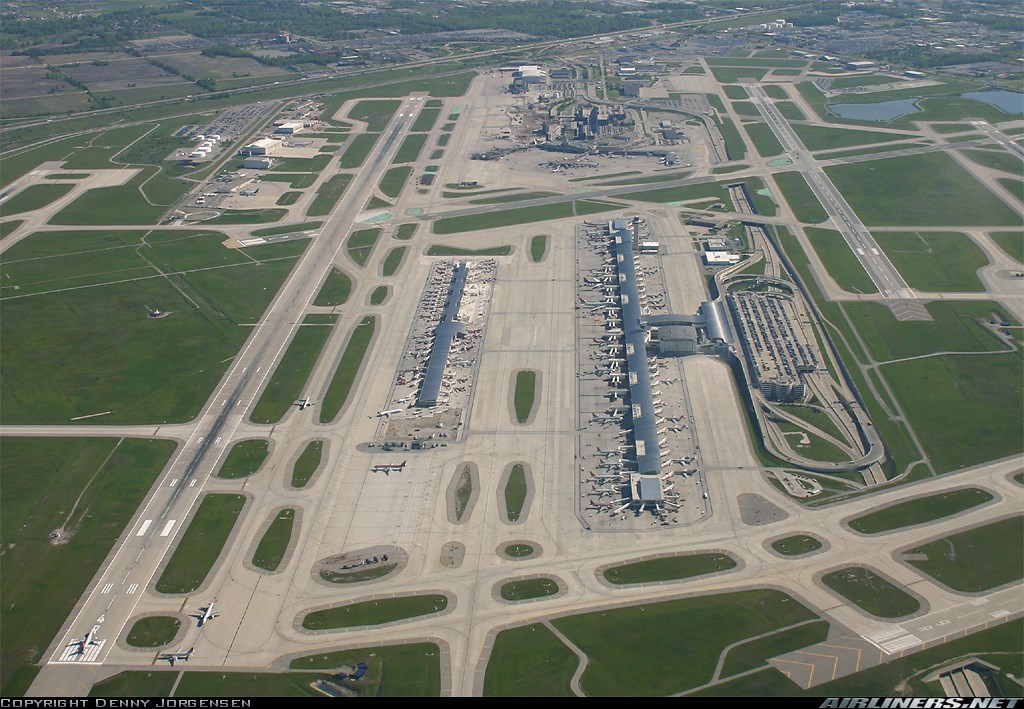
Voto:
Continente: América
País: Estados Unidos
Localización: Condado de Wayne, Míchigan
Año:
Estado: Terminado
Descripción:Aeropuerto de Detroit (DTW)
El aeropuerto internacional de Detroit sirve no sólo a toda el área de Detroit sino también a todo el estado de Michigan en inclusive a localidades de estados vecinos, puesto a que es uno de los más activos del país y del mundo, con basto servicio de vuelos domésticos y en cuanto a los internacionales, cubre países limítrofes, Caribe, algunos puntos de Europa, entre otros. Alrededor de 32.2 millones de pasajeros lo circularon en 2012.
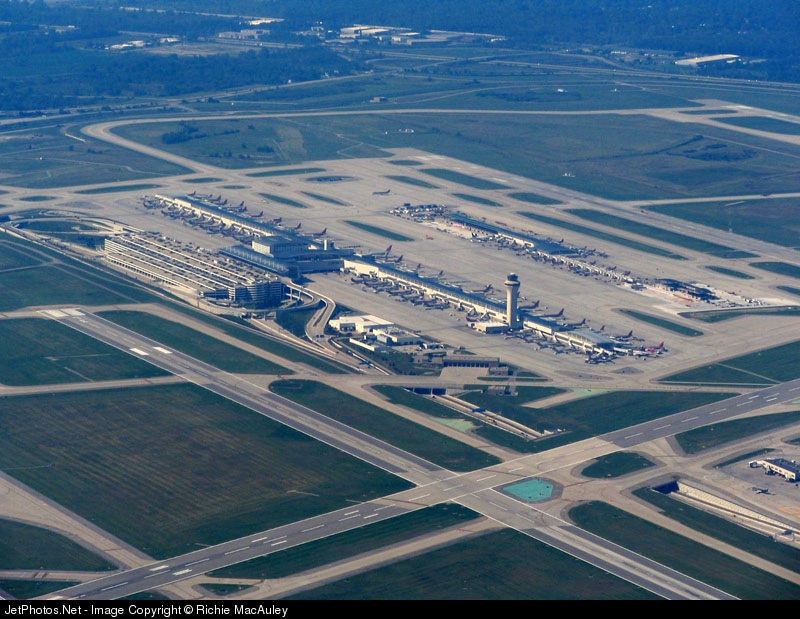
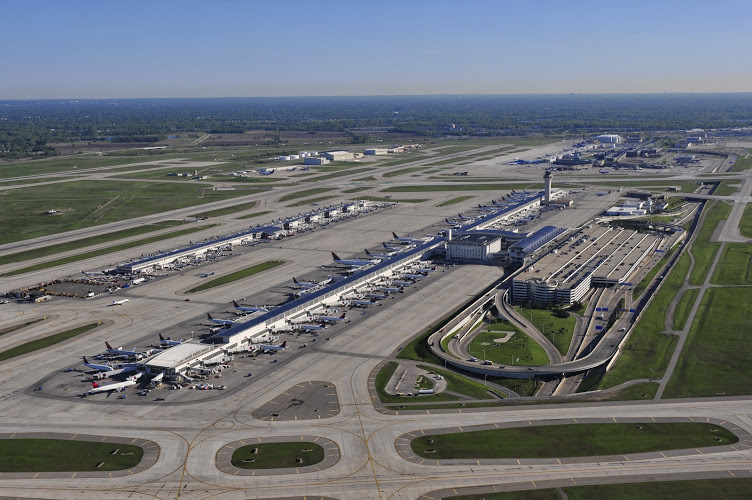
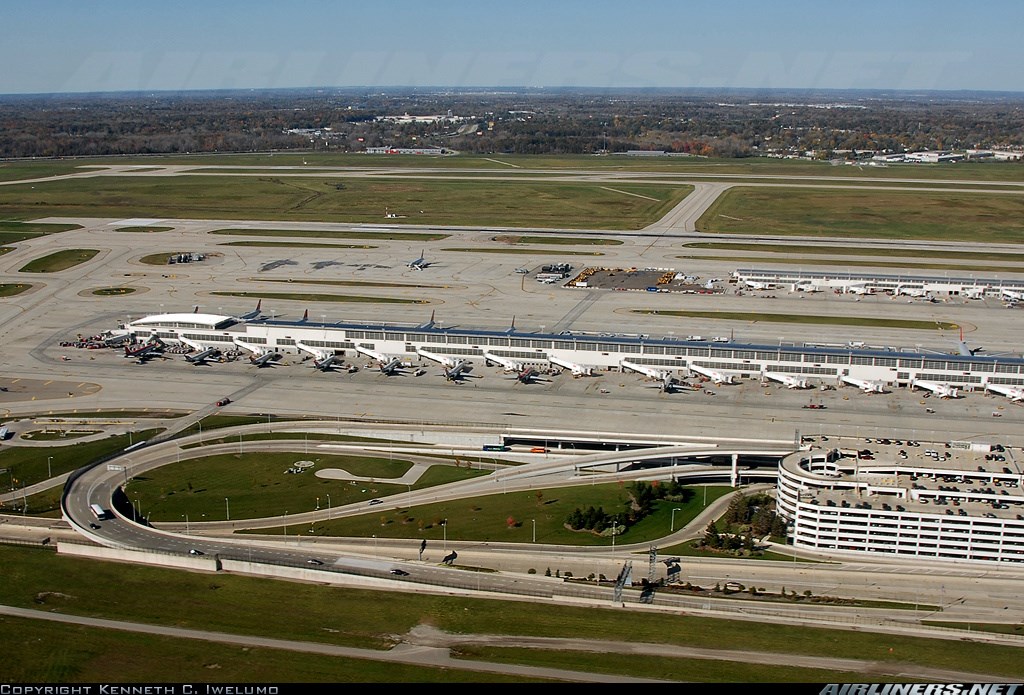
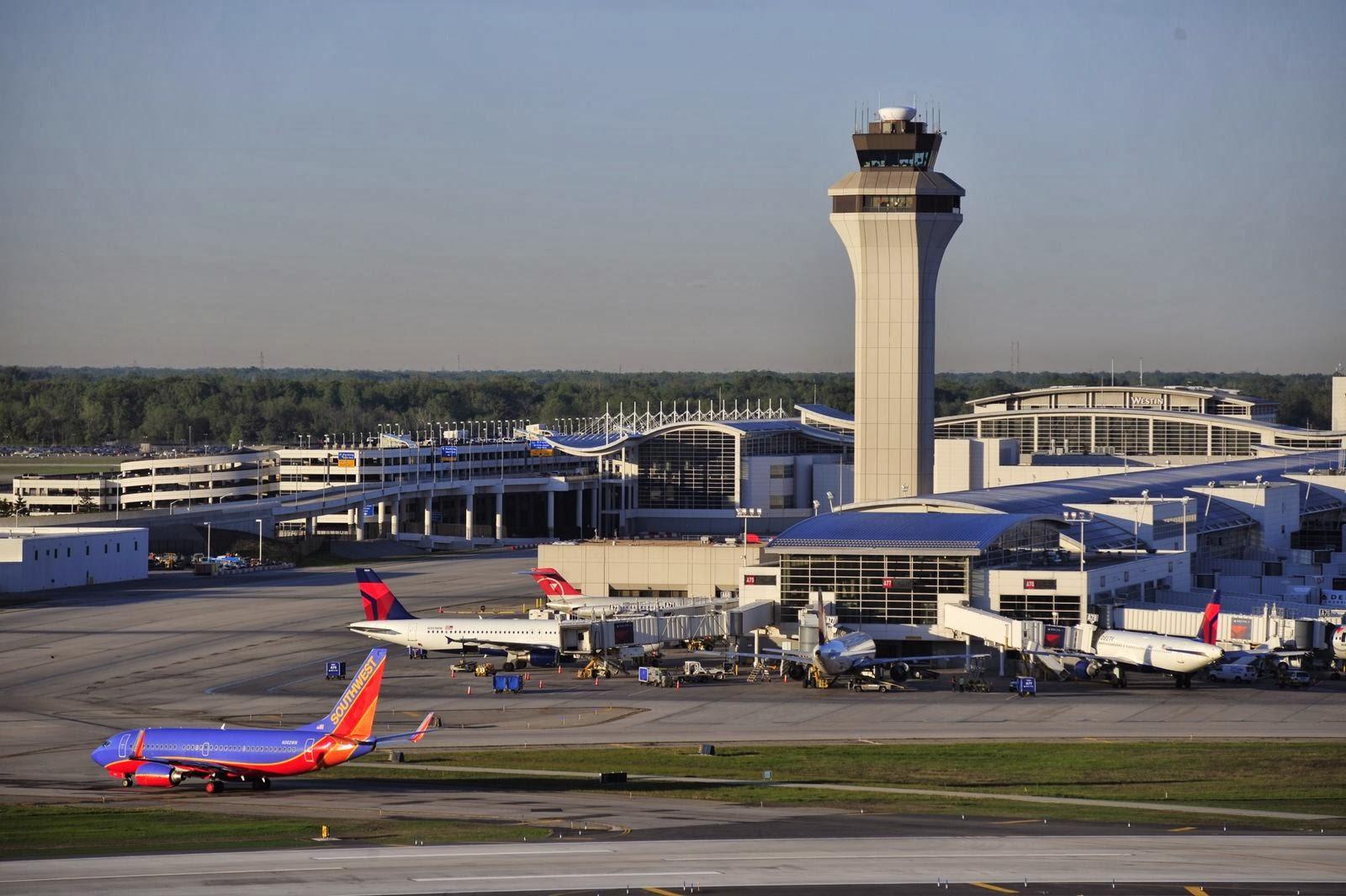
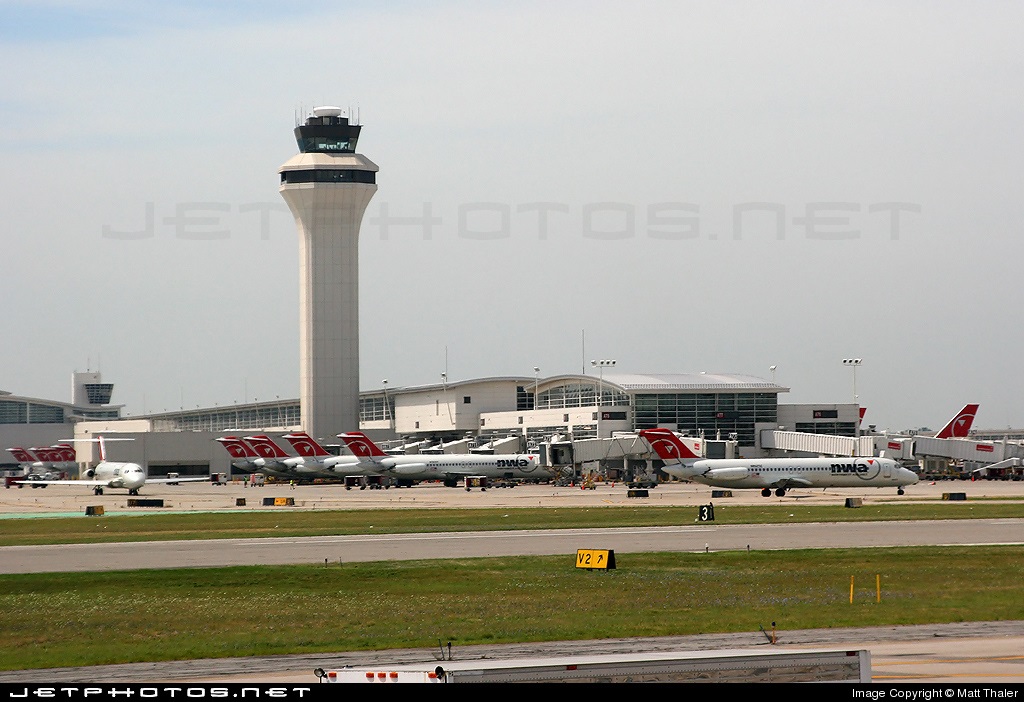
Nombre Oficial
Aeropuerto metropolitano de Detroit, Condado de Wayne - ( Detroit Metropolitan Wayne County Airport)
Código IATA: DTW
Inauguración: 22 de febrero de 1930
Sitio Web Oficial: http://www.metroairport.com
Tel: 1 (734) 942 3550 | (734) AIRPORT
Transporte
Buses, shuttles puerta a puerta, limusinas y taxis comunican al aeropuerto con el área urbana. Las líneas de autobuses 125 y 280 parten de la terminal y sus recorridos finalizan en el centro de la ciudad de Detroit con un tiempo de viaje de 40-50 minutos. Los autobuses de SMART (Tel. (866) 962 5515) tienen sus paradas en el camino exterior (nivel inferior), cerca de las oficinas de Transporte Terrestre en la Terminal del Norte. El costo del boleto comienza a partir de $2 dólares dependiendo de la zona de destino. La compañía de taxis autorizada a trabajar en el aeropuerto es Metro Cab; algunos de sus costos y destinos son: Ann Arbor ($48), Dearborn ($33), centro de Detroit ($43), Farmington Hills ($55), Groosse Pointe ($56), Southfield ($49), Troy ($66), para más información (Tel: (734) 997-6500). La compañía de limusinas que opera es Metro Cars Reservation y algunos de sus costos y destinos son: Ann Arbor ($68), Dearborn ($43), centro de Detroit ($56), Farmington Hills ($72), Groosse Pointe ($77), Southfield ($64), Troy ($91), para más información (Tel: (800) 456-1701).
http://www.aeropuertosdelmundo.com.ar/americadelnorte/usa/aeropuertos/detroit.php
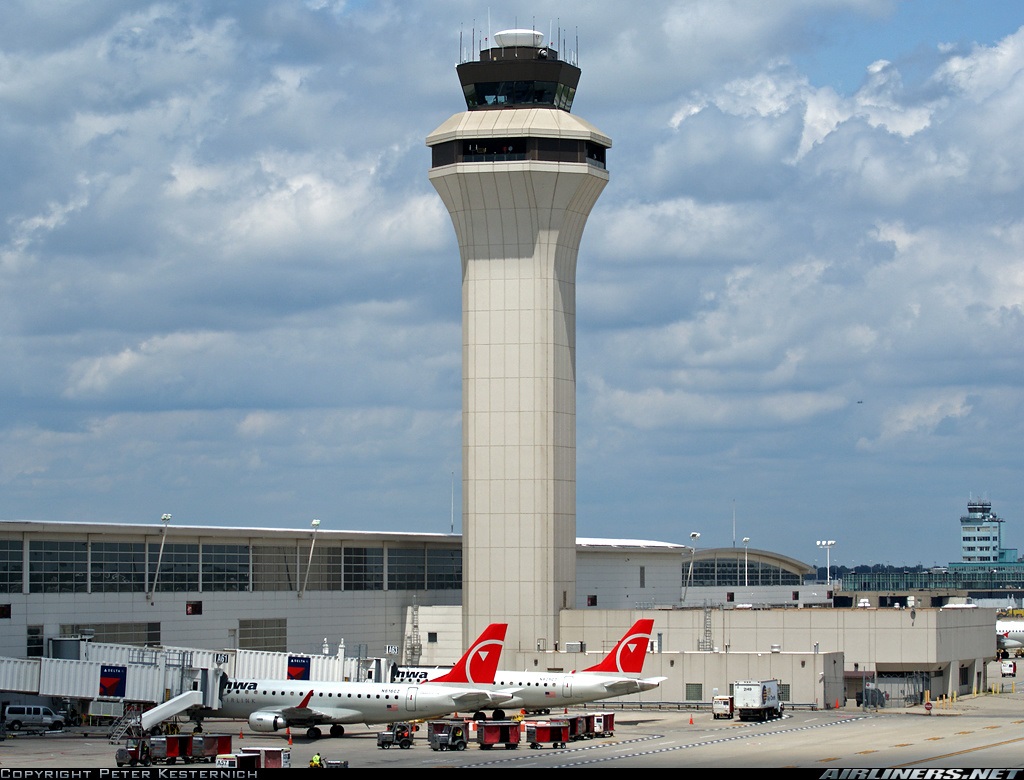
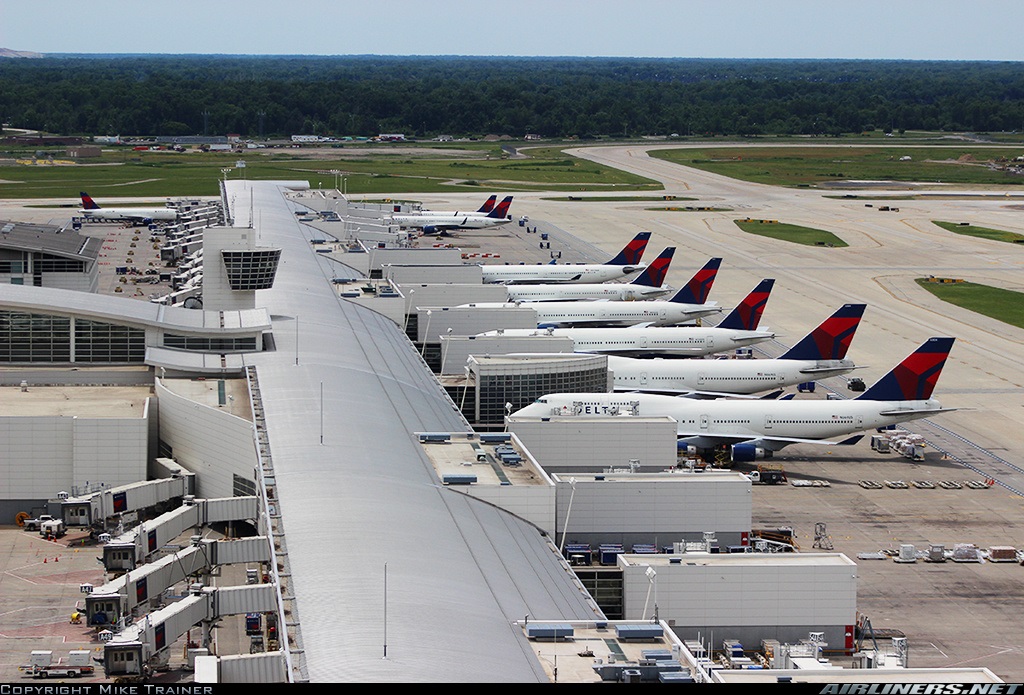
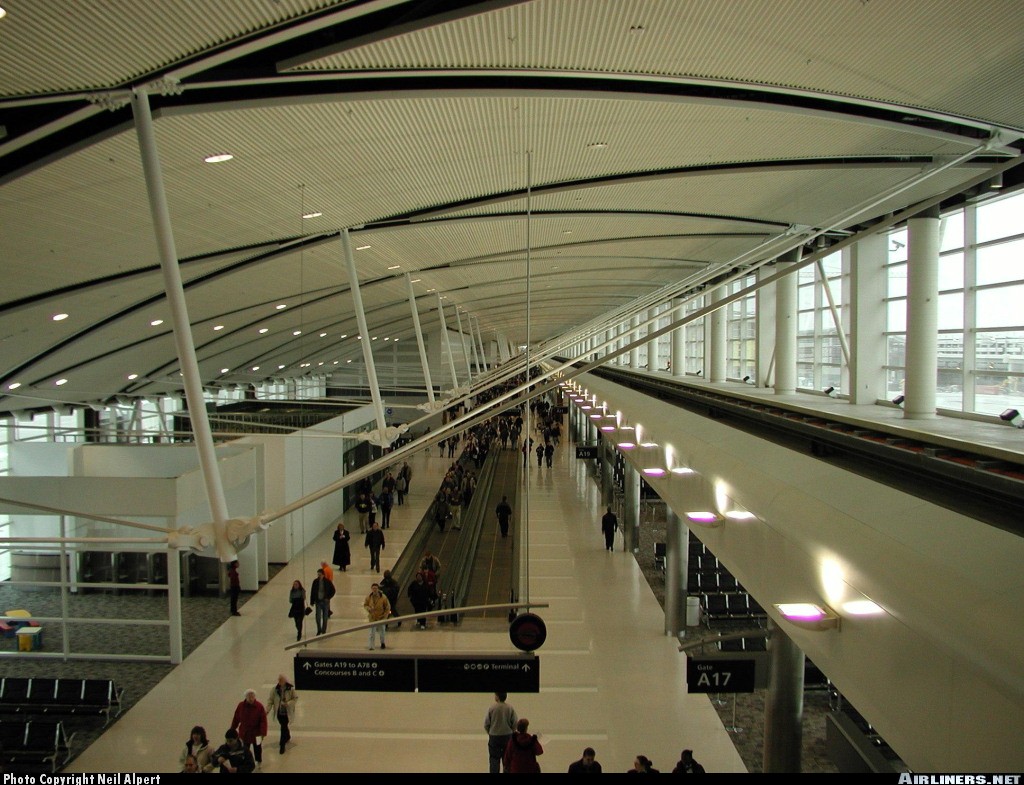
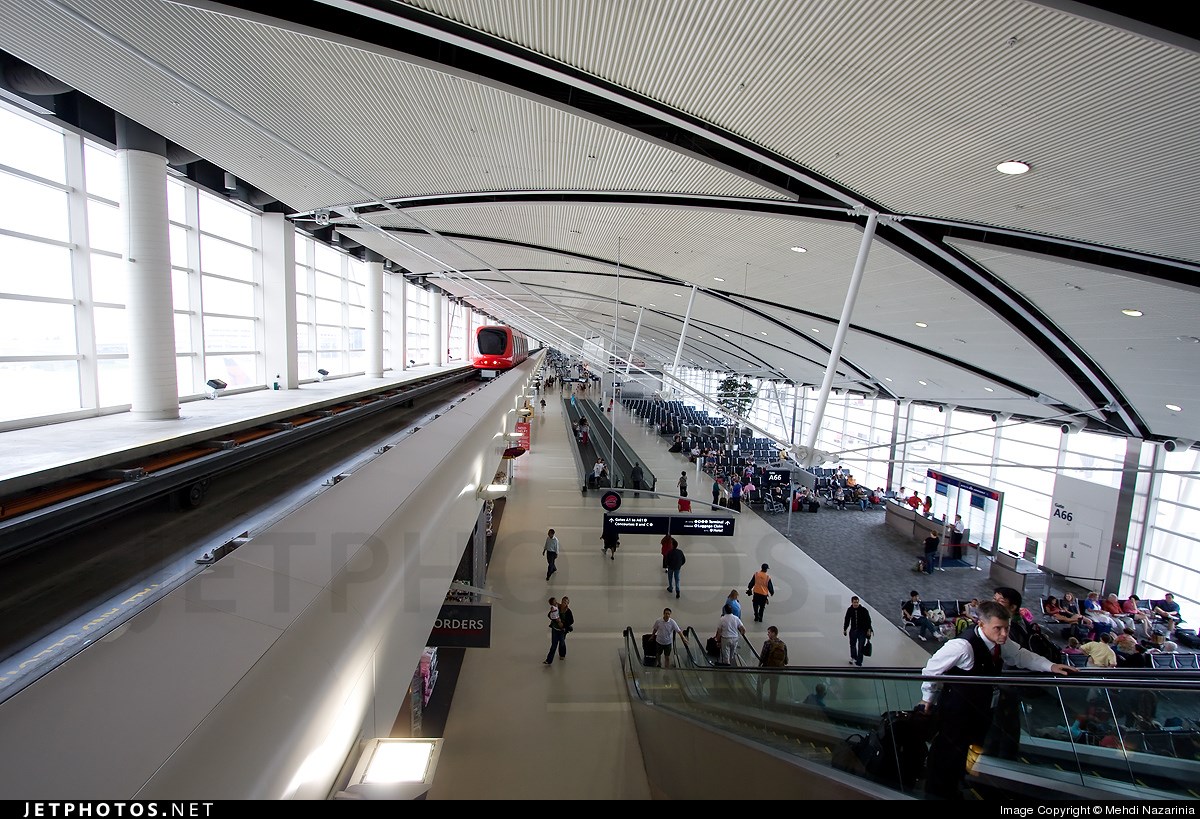
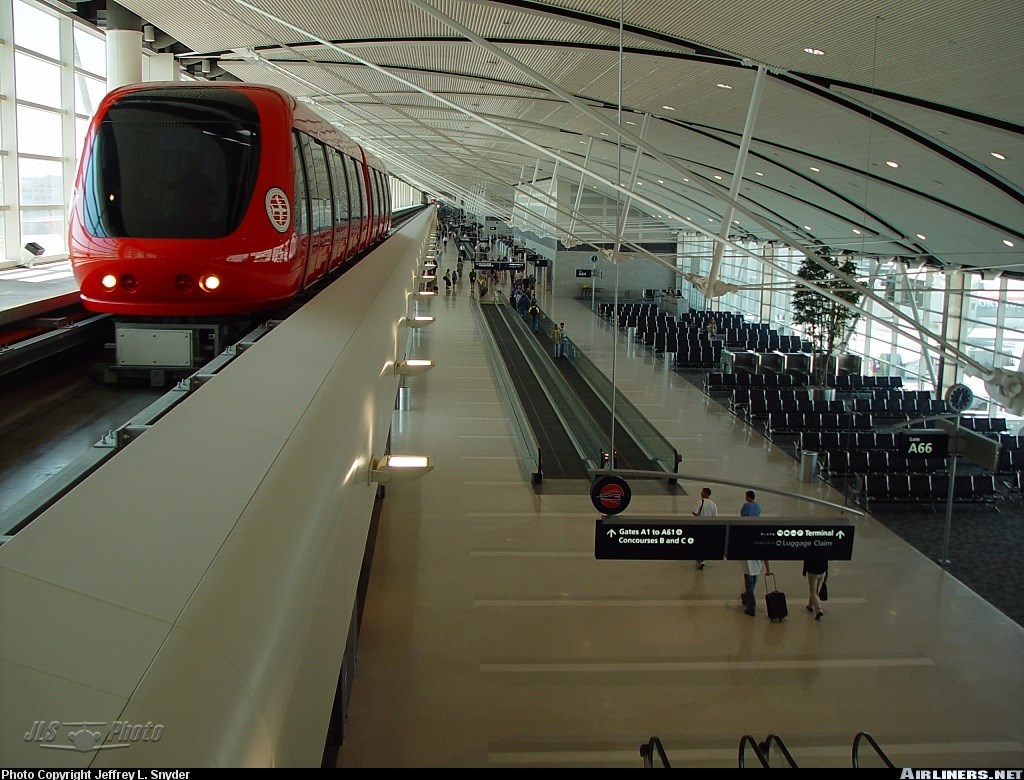
Detroit Metropolitan Wayne County Airport - Parking Detroit Metro Airport
By: Global Airport Online Database - 14.09
Detroit Metropolitan Wayne County Airport (IATA: DTW, ICAO: KDTW), usually called Detroit Metro Airport, Metro Airport locally, or simply DTW, is a major international airport in the United States covering 7,072-acre (11.050 sq mi; 2,862 ha) in Romulus, Michigan, a suburb of Detroit. It is Michigan's busiest airport, and one of the largest air transportation hubs in the country.
The airport serves as Delta Air Lines' second-busiest hub. Delta, along with SkyTeam partner Air France, and codeshare partner Virgin Atlantic (beginning June 1, 2015), occupy the McNamara Terminal, which contains both domestic and international gates and serves as the airline's primary gateway to Asia for the Eastern United States and its third-busiest gateway to Europe. The airport is a major gateway for tourism in metropolitan Detroit and is one of SkyTeam's major Midwestern hubs. It is also a focus city for Spirit Airlines, which was founded in Metro Detroit and once operated its largest base at the airport. Operated by the Wayne County Airport Authority, the airport is one of the nation's most-recently expanded and modernized airports, with six major runways, two terminals, 145 in-service gates, and an on-site Westin Hotel and conference center. McNamara Terminal's Concourse A is the world's second-longest airport terminal building at 1 mi (1.6 km). It is just surpassed by the 1.06 mi (1.71 km) long Kansai International Airport Terminal 1 near Osaka, Japan, which opened in 2008 with a total length of 1.7 miles (2.7 km), is actually three separate structures linked together by underground connectors). Detroit Metropolitan Airport has maintenance facilities capable of servicing and repairing aircraft as large as the Boeing 747. The airport is 7 miles (11 km) from Willow Run Airport (YIP).
In 2012, Detroit Metropolitan Wayne County Airport was the 16th-busiest airport in the United States and the 44th-busiest airport in the world in terms of passenger traffic. In terms of aircraft operations (takeoffs and landings), it remains one of the ten busiest airfields in North America. Metro Airport also serves the Toledo, Ohio, area, approximately 47 miles (76 km) south of the airport, and the city of Windsor, Ontario and Southwestern Ontario in nearby Canada. The airport serves over 160 destinations and was named the best large U.S. airport in customer satisfaction by J.D. Power & Associates in 2010.
History
Wayne County began to plan an airport in the western townships of the county as early as 1927. The following year the county board of supervisors issued a $2 million bond to fund the purchase of one square mile of land at the corner of Middlebelt and Wick roads, the northeastern boundary of today's airport. Construction was completed in 1929, and the first landing was on February 22, 1930; Wayne County Airport was formally dedicated on September 4, 1930. That year Thompson Aeronautical Corporation, a forerunner of American Airlines, inaugurated service from the airport. From 1931 until 1945, the airport housed Michigan Air National Guard operations gained by the United States Army Air Forces. It was also named Romulus Field during the war. The original runway (14/32) was later decommissioned, but parts of it remain as Taxiways M-4 and P-4, crossing from southeast of Runway 3R/21L through Runway 9L/27R and ending northwest of Runway 3L/21R.
Between 1947 and 1950, county officials expanded the small airport to become Detroit's primary airport. The airport was renamed Detroit-Wayne Major Airport in 1947, and over the next three years expanded in size threefold as three more runways were built. In 1949, runways 3L/21R and 9L/27R were built, and in 1950, runway 4R/22L was added. During this time, most commercial traffic shifted from the cramped Detroit City Airport (now Coleman Young International Airport) northeast of downtown Detroit to the larger Willow Run Airport over 20 mi (32 km) west of the city, and 10 mi (16 km) west of Wayne County Airport.
Pan-Am (1954), and BOAC (1956), were the first passenger airlines at Detroit-Wayne Major. In the April 1957 Official Airline Guide, they were the only passenger airlines: three Pan Am DC-7Cs per week FRA-LHR-SNN-DTW-ORD and back, and one BOAC DC-7C per week LHR-PIK-YUL-DTW-ORD and back (skipping YUL on the return flight).
Aerial photographs of DTW from 1949 and 1956 show the airport's expansion. American Airlines shifted to Detroit-Wayne in October 1958, followed by Northwest, Allegheny and Delta in the next few months. In 1958, the Civil Aviation Administration -- now the Federal Aviation Administration (FAA) -- announced the inclusion of Detroit-Wayne in the first group of American airports to receive new long-range radar equipment, enabling the airport to become the first inland airport in the United States certified for jet airliners. Also in 1958, the L.C. Smith (South) Terminal was completed and the airport was given its present name.
The remaining passenger airlines at Willow Run moved to Metro Airport in 1966, and the North Terminal (later renamed the Davey Terminal) opened that year. Growing international traffic necessitated a third terminal, the Michael Berry International Terminal, that opened in 1974. The last of its original three parallel runways (3R/21L) was completed in 1976. A new parallel cross winds runway (9R/27L) opened in 1993.
Republic Airlines began hub operations in 1984, and its merger with Northwest Airlines in 1986 expanded the hub. Transpacific operations began in 1987 with nonstop flights to Tokyo. The last of Metro's six runways (4L/22R) was completed in December 2001 in preparation for the opening of the mile-long, 122-gate, $1.2 billion McNamara Terminal in the airport midfield in 2002. The airport remained a hub airport for Northwest Airlines until it merged with Delta Air Lines.
The present Runway 3L/21R has had four identifiers. When opened in 1949, it was Runway 3/21. With the opening of the new west side Runway 3L/21R in 1950, the original 3/21 became 3R/21L. With the opening of the new east side Runway 3R/21L in 1976, it became 3C/21C. With the opening of Runway 4L/22R in December 2001 and the consequent splitting of the field into two sectors (3/21 on the east and 4/22 on the west), Runway 3C/21C became Runway 3L/21R.
In 2009, Detroit Metro Airport launched its first social media efforts with participation in Twitter, Facebook, and YouTube networks.
In April 2011, Lufthansa launched a unique curbside check-in and baggage check service for premium customers departing from DTW's North Terminal to Frankfurt and beyond. In doing so, Lufthansa became the only airline allowing international customers departing from DTW to check their bags and receive a boarding pass directly at the curb, while DTW becomes Lufthansa's first North American gateway to feature this service.
Planned development
The Airport Authority's long-term plans include an airport rail system, a new runway, and terminal expansions. The FAA projects that air traffic will grow 67% at Detroit Metro over the next 20 years, which would equate to 60 million passengers. The rail system would connect the existing McNamara Terminal and the new North Terminal together via tram with an anticipated consolidated rental car facility and a planned regional rail system. Also, the airport is considering to extend Concourses B and C in the McNamara Terminal. To pay for these projects, the Airport Authority has asked Congress to raise the current $4.50 passenger facility fee to $7.00. Former hub carrier Northwest Airlines had opposed the utilization of the passenger facility fee to fund the airport rail system.
The Wayne County Airport Authority's latest FAA Master Plan includes a number of proposed future developments to be considered at such time as demand warrants and funding is available. A significant element of this plan is a proposed new fifth parallel runway. This addition would add to the airport's four existing parallel runways and its two crosswind runways in order to alleviate future congestion.


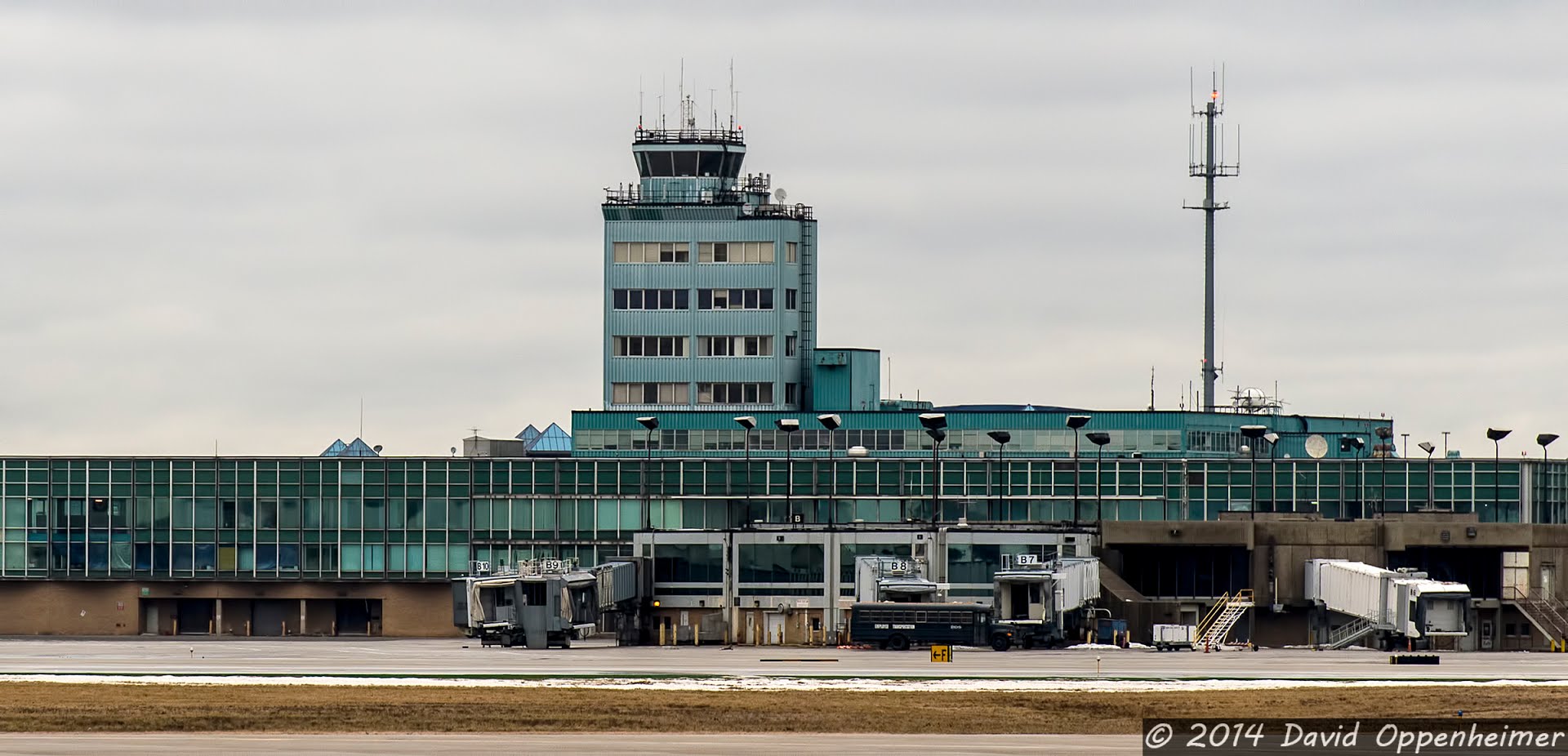
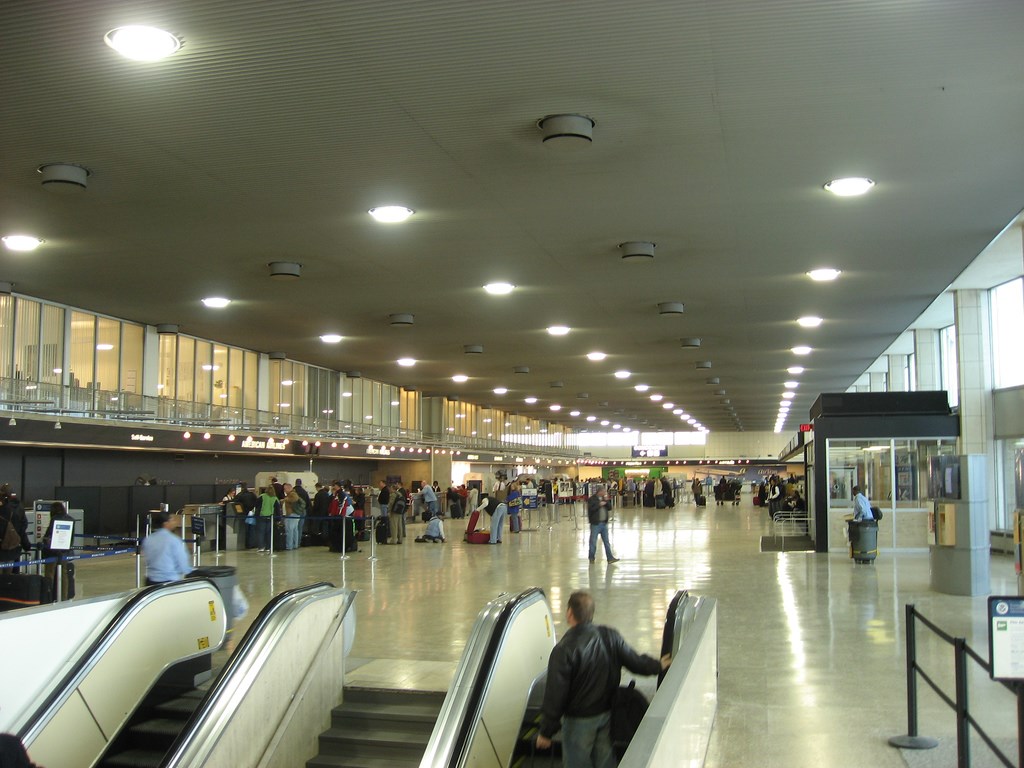

Terminals
Edward H. McNamara Terminal
The McNamara Terminal, also once known as the Northwest WorldGateway, opened February 25, 2002. Designed by SmithGroup and built by Hunt Construction Group, it replaced the aged Davey Terminal, Northwest Airlines principal hub until its replacement. During development, the terminal was known as the Midfield Terminal. The terminal is used exclusively by Delta (which merged with Northwest), Virgin Atlantic (beginning June 1, 2015), and SkyTeam partner Air France and has three concourses, A, B, and C, which house 121 gates with shopping and dining in the center of A concourse (known as the Central Link), as well as throughout the concourses. In addition to moving walkways spaced along the length of each concourse, concourse A has a people mover, the ExpressTram, that transports passengers between ends of the 1 mi (1.6 km) Concourse A in just over three minutes. Trams arrive almost simultaneously at the Terminal Station at the midpoint of the concourse and depart in opposite directions to the North Station and the South Station, then return. The McNamara Terminal opened a new baggage sorting facility in October 2008, which has improved the screening of baggage through 14 new explosive detection system devices along a fully automated conveyor system. Northwest Airlines said that it reduced the amount of lost baggage, and it improved the timeliness of bags getting to their correct flight.
A AAA Four Star Westin hotel is connected to the terminal. Additionally, overnight guests at the hotel who are not flying can obtain a pass to enter the concourses to visit shops and restaurants. Called the Airport Access Authorization to Commercial Establishments Beyond the Screen Checkpoint (AAACE), registered guests must be cleared through the same security background check (Secure Flight) and TSA screening process as travelers to access the terminal area. Dallas-Fort Worth International Airport is the only other airport participating in this program.
The A concourse houses 64 gates with 12 gates used for international departures and arrivals processing. The A concourse is intended for all but the smaller regional aircraft. At the midpoint of the concourse is a large, black granite water feature designed by WET. The concourse contains over 1.5 mi (2.4 km) of moving walkways. Signage through the terminal is in English and Japanese due to the large number of regular flights between Detroit and points in Japan (however, the ExpressTram does not have Japanese-language announcements), and signage in other languages is located inside international arrivals areas.
The twelve international gates are capable of dual jet bridge loading and unloading. They also contain two exit configurations depending on the arriving flight. Domestic arrivals follow the upper path directly into the terminal while international arrivals proceed downstairs to customs and immigration screening. The Customs and Border Protection processing center located in the terminal's lower level is designed to accommodate as many as 3,200 passengers per hour. International arriving passengers connecting to another flight are screened by TSA at a dedicated screening checkpoint within the international arrivals facility. Those passengers then exit directly back into the center of the A concourse. Passengers arriving from international destinations who end their trip in Detroit (or connecting to a flight via North Terminal) exit directly into a dedicated International Arrivals Hall on the lower level of the terminal.
The B and C concourses currently have fifty-eight gates that are used for Delta's regional flights that employ smaller aircraft. Nearly all regional flights have jet bridges, eliminating the need for outdoor boarding.
The B and C concourses are connected to the main terminal building and the A Concourse by a pedestrian walkway under the Airport ramp. This walkway, known as the Light Tunnel, features an elaborate multi-colored light show behind sculpted glass panels extending the entire length of the walkway, as well several moving walkways. The light patterns are synchronized with an original musical score composed by Victor Alexeeff, which runs for nearly 30-minutes before repeating. This installation, one of the first large-scale uses of color changing LED lighting in the United States, was produced by Mills James Productions with glasswork by Foxfire Glass Works of Pontiac, Michigan. The display won multiple lighting design awards including the prestigious Guth Award of Merit. For passengers who are prone to medical conditions such as seizures, there are buttons at each end of the tunnel that will suspend the light show for five minutes so they can pass through with no adverse effects.
North Terminal
The North Terminal, designed by Gensler and built by Walbridge/Barton Malow Joint Venture, opened September 17, 2008 as the replacement for the aged Berry and Smith Terminals, which housed all non-SkyTeam airlines. Initially, Wayne County Airport Authority sought bids for the naming rights of the North Terminal, however, after two years with no successful offers, the effort ceased and the North Terminal name remained.
The terminal houses all non-SkyTeam airlines serving the airport, and is considered the "D" Concourse of the airport; the McNamara Terminal has Concourses A, B, and C. The concourse has 26 gates, two of which opened in the summer of 2009 to accommodate international widebody aircraft. The two gates could not be used at the time of the building's opening because they were extremely close to Smith Terminal's C Concourse. (That concourse was demolished after flights moved to the new terminal, which enabled the final two gates at the new terminal to be completed.) The terminal features four long segments of moving walkways on the departures level, and another moving walkway on the lower level; that is for international arriving passengers to access the Federal Inspection Services area.
The North Terminal houses two six-lane security checkpoints. The terminal also has U.S. Customs & Border Protection inspection facilities located on the lower level for arriving international flights.
The North Terminal has five common-use domestic baggage carousels on the lower level. Two additional carousels are located inside the Federal Inspection Services area for international flights, and a central Oversize Baggage Claim is adjacent to both the international and domestic carousel areas.
January 29, 2010, the North Terminal was named winner of the "Build Michigan" award project.
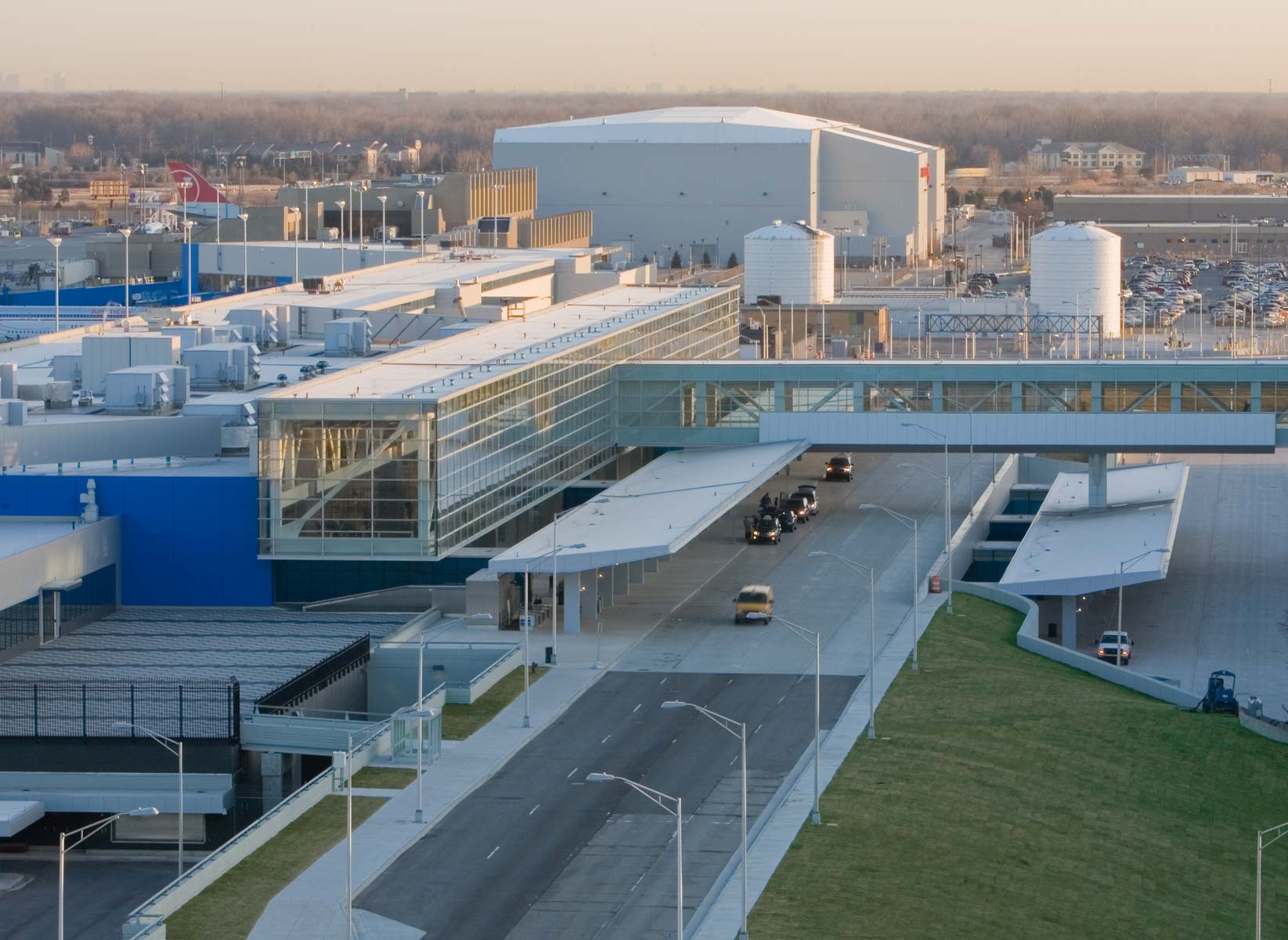

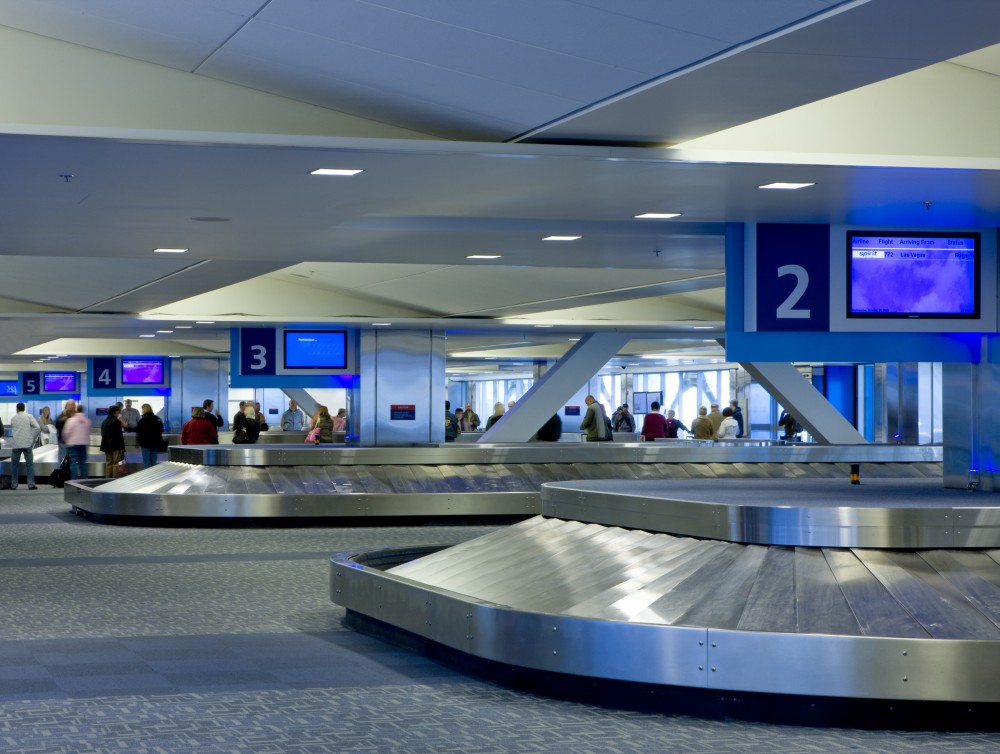
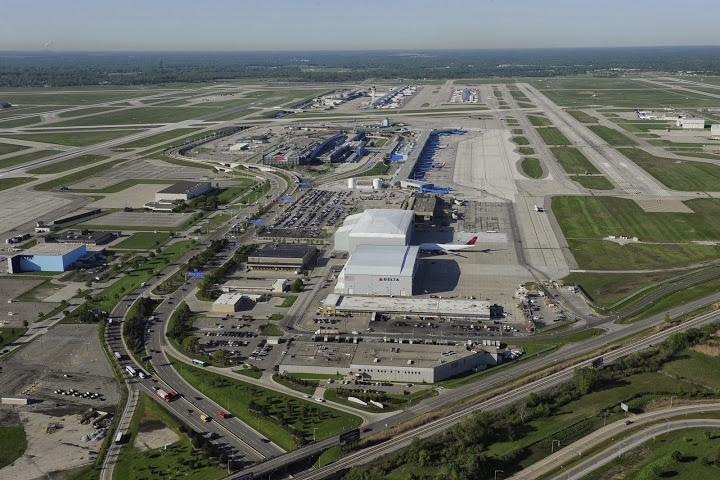
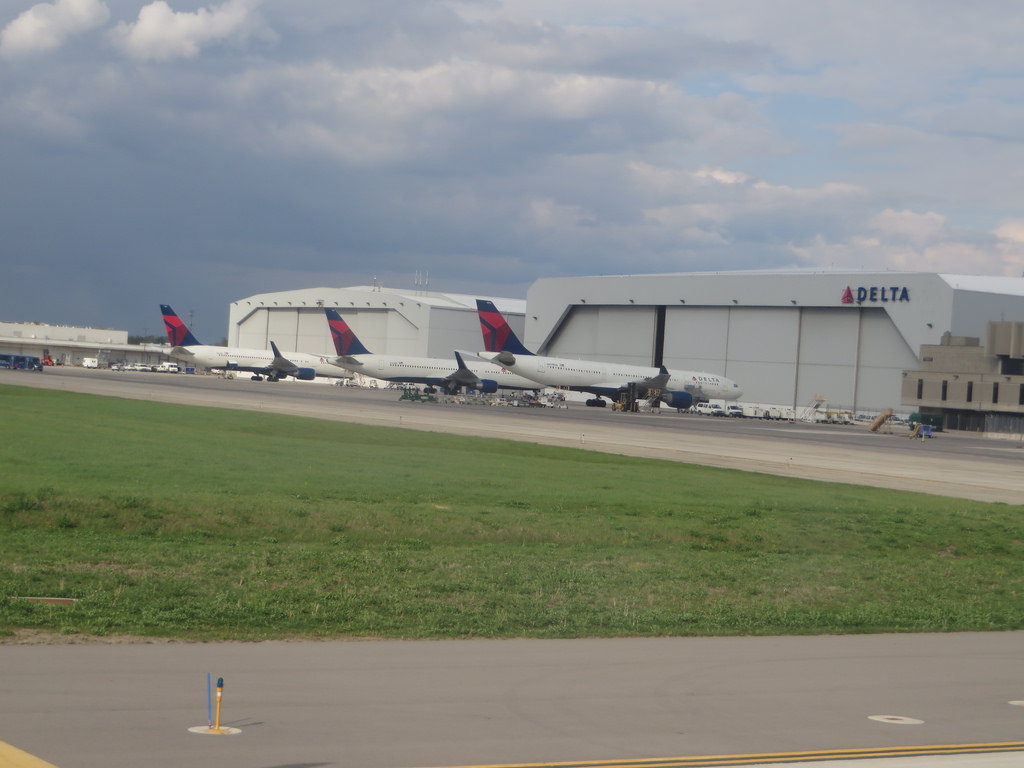
Historical terminals
Michael Berry Terminal
The Berry Terminal, named for a former airport commissioner, was designed by Detroit architect Louis G. Redstone, and opened in 1974 as the international terminal at DTW. It was decommissioned on September 17, 2008, and replaced by the North Terminal; however, the airport authority voted May 20, 2009, to renovate the terminal to house its offices. All international passengers would arrive at this terminal, pass through customs and immigration inspection, and continue on to their connecting flights by bus to adjacent terminals.
Originally containing six gates (two of which were removed in 2003 to allow for construction of an adjacent Northwest Airlines maintenance hangar), the terminal was later used for scheduled and charter flights. There were still several international scheduled flights on low cost carriers to destinations in the Caribbean and other warm-weathered places in the early 2000s (decade), including flights from Champion Air, Ryan International Airlines and USA3000 Airlines. Four charter airlines also used this terminal.
Since its closure in 2008, the Berry Terminal has become a popular space for commercial film and television production. Films such as Up in the Air (2009), Machine Gun Preacher (2011) and This Must Be the Place have used the now-vacant terminal as a set (in addition to shooting in and around the airport's active terminals).
L. C. Smith Terminal
The Smith Terminal, named for Detroit-Wayne Major airport visionary Leroy C. Smith, was built in 1958 (also known as the old version of The North Terminal). Though cited as the oldest of Metro Airport's terminals, that designation belongs to the Executive Terminal building located near Middlebelt Road and Lucas Drive, one-quarter-mile east. The Executive Terminal was built in the late 1920s and is still in operation today as home to ASIG, a flight support company.
The Smith Terminal's thirty-two gates originally housed Northwest Orient Airlines, Allegheny Airlines (forerunner to US Airways), Eastern Airlines, and Pan-Am, among others. A control tower was included in the construction, and served its purpose until the late 1980s, when a new control tower was built near the site of the new McNamara Terminal.
In later years, Smith Terminal hosted North American airlines other than Northwest, Continental, and later Delta, which relocated to the McNamara Terminal in 2002 before its merger with Northwest.
State of the art for its time, the Smith Terminal eventually became victim to airline expansion. The design of the building did not allow for physical expansion of the ticketing area. To accommodate additional airlines, ticketing counters were constructed on the sides of the lobby in areas that previously held lounges and retail. In contrast, the North Terminal was constructed with future expansion in mind.
Spirit Airlines, which operated out of many of the gates once used by Northwest, made few upgrades to the gate areas in those parts of the terminal. The Northwest Airlines display boards near check-in counters at each gate remained in place, with the Northwest logos removed, and a Spirit information board simply affixed over the old signage.
On September 10, 2008, The Detroit News reported that Smith Terminal itself will not be demolished due to the airport authority offices remaining on the upper floors. However, the Detroit Free Press of October 9, 2008, stated that maintaining the terminal in its present condition would cost upwards of $4 million annually in utilities, a sore spot for airlines at DTW who foot the bill, in part, through airport landing fees; the airlines were hoping for a greater cost savings once the Smith and Berry Terminals were decommissioned. On May 20, 2009, the airport authority formally voted to totally vacate the Smith Terminal, while retaining and renovating the Berry Terminal for its offices.
Discussions were also raised regarding proposed construction of a new structure to house the Airport Authority offices and Airport Police, with a preliminary price tag of $31.5 million.
James M. Davey Terminal
The Davey Terminal was built in 1966 and was first known as "Terminal 2" or the "North Terminal". Designed by the firm of Smith, Hinchman and Grylls, it was said to be the largest post tensioned building in the world. Tapering cruciform columns around the perimeter and curved beams supported five large concrete roof panels. The lack of columns allowed maximum flexibility in the interior space. The spaces between the roof panels and exterior columns were filled with glass to allow abundant natural light into the building. It was renamed the "J. M. Davey Terminal" in 1975 in honor of former airport manager James M. Davey. It originally contained three concourses labeled C to E, as well as a Host Hotel which later was rebranded Marriott. In the early 1980s, a separate ticketing area was constructed to the north of the Davey Terminal, along with Concourses F and G to eventually accommodate Northwest Airlines' regional jet fleet.
Over time, the terminal and added concourse began showing its age due to its layout and poor maintenance, hastened further by increased aircraft traffic, which it was not designed to handle efficiently. Despite this, more gates were added to Concourse C in a short-term expansion project in the early 1990s, making it 26 gates in length. This concourse was considered the worst by most travelers due to its long distance from the center of the terminal, and for its length.
The Davey Terminal was originally the principal base of operations for Republic Airlines, which merged with Northwest Orient Airlines to become Northwest Airlines in 1986. Upon relocation of Northwest operations to the McNamara Terminal, the Davey Terminal was mothballed for three years before demolition of the ticketing area and Concourse G began October 17, 2005, to prepare for the North Terminal project. All concourses of the Davey Terminal and adjoining Marriott hotel, except gates 1 to 11 of Concourse C, were subsequently demolished in 2005-06 (the remaining gates were in use by Spirit Airlines until the new North Terminal opened on September 17, 2008).
http://airpodat.blogspot.com.es/2015/04/detroit-metropolitan-wayne-county_14.html
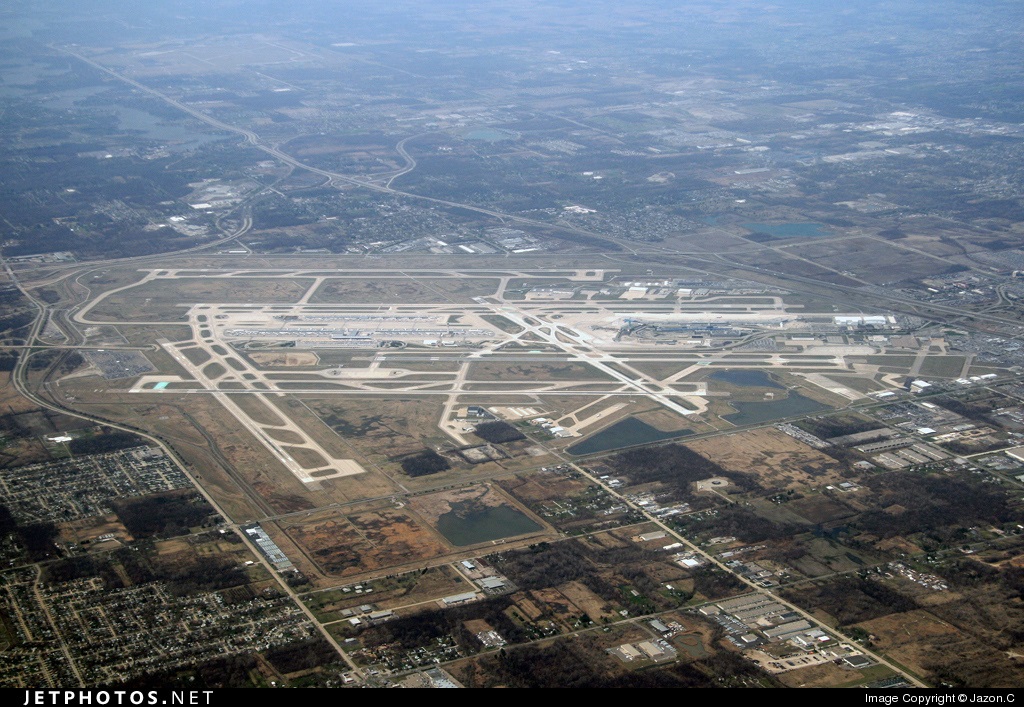
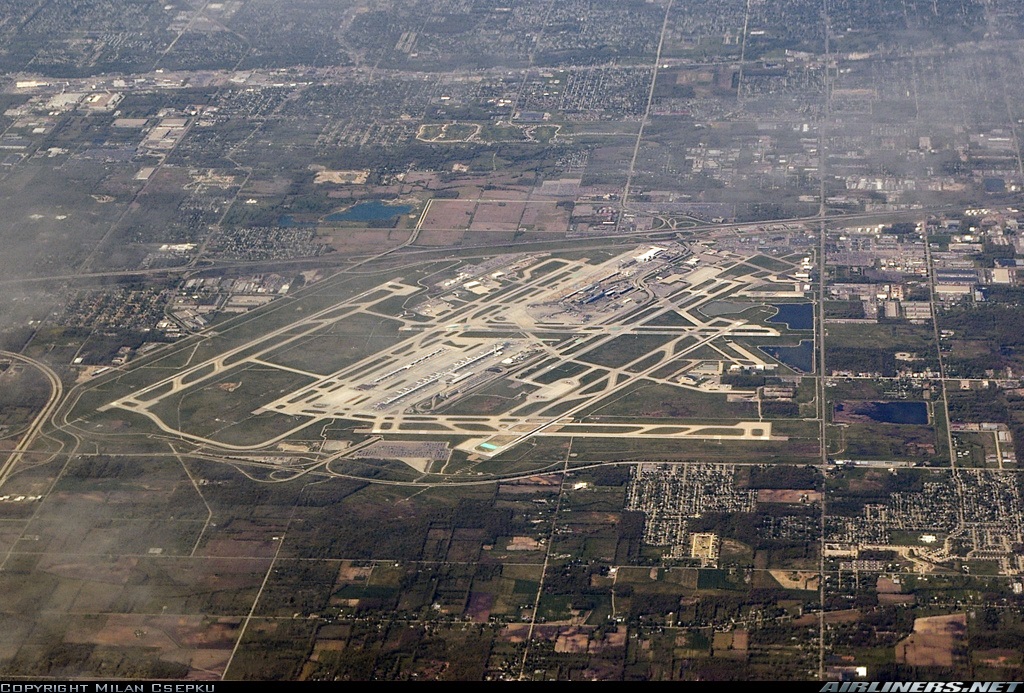
El Aeropuerto Internacional de Detroit (código IATA: DTW, código OACI: KDTW), también conocido como Aeropuerto Metropolitano del Condado Wayne de Detroit, Aeropuerto Metropolitano de Detroit, Aeropuerto Metro Wayne de Detroit, Aeropuerto Metro o simplemente como DTW, es un gran aeropuerto internacional ubicado en Romulus, Míchigan, un barrio periférico de Detroit; se trata del aeródromo más activo del estado estadounidense de Míchigan.
Detroit es el segundo centro de operaciones más grande de Northwest Airlines (en la actualidad una compañía subsidiaria de Delta Airlines) principal usuaria del aeropuerto. También es la segunda base más grande para Spirit Airlines,3 que es también la segunda compañía transportista más grande del aeropuerto.
Siendo operado por la Autoridad Aeroportuaria del Condado Wayne, el aeropuerto ha sido recientemente expandido y modernizado, con seis pistas de despegue y aterrizaje principal, dos terminales, 145 entradas en servicio,4 un Westin Hotel adjunto y un centro de conferencias. El Anexo A de la Terminal McNamara es el segundo edificio de mayor tamaño de un aeropuerto, con una longitud de una 1.6 km (1 milla)5 (solo por detrás de la terminal del Aeropuerto Internacional de Kansai, que mide 1.7 km [1.06 millas ]). Sus instalaciones de mantenimiento tienen la capacidad de dar servicio y reparación a aeronaves tan grandes como un Boeing 747.
http://es.wikipedia.org/wiki/Aeropuerto_Internacional_de_Detroit
http://en.wikipedia.org/wiki/Detroit_Metropolitan_Wayne_County_Airport
http://www.skyscrapercity.com/showthread.php?t=1427416

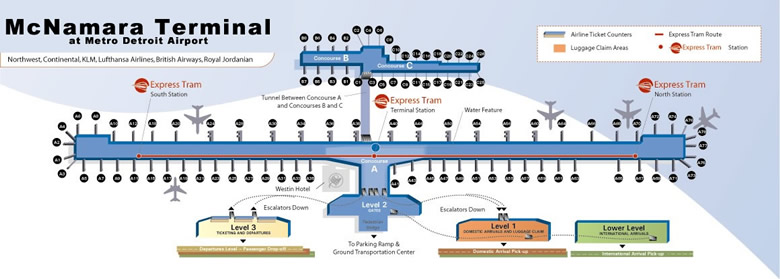
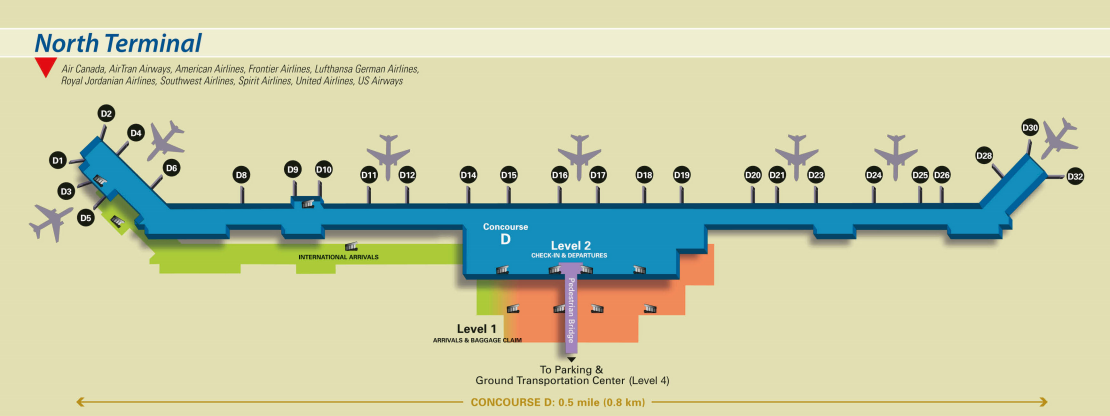
Vídeo:
Web recomendada: http://www.metroairport.com/
Contador: 10980
Inserción: 2015-04-30 16:30:15
Lugares a visitar en un radio de 100 km (en línea recta)
Mapa de los lugares a 100 km (en línea recta)
Mostrando Registros desde el 1 hasta el 0 de un total de 0
Visitas |
Más visitados Basílica de San Marcos 154480 Catedral de Notre Dame (París) 143796 Torre de Pisa 131221 Monte Saint-Michel 100352 Presa de las Tres Gargantas 80836 |
Incorporaciones |
Comentarios hazola Cúpula de la Roca gracias me... gera Buenos Aires las mejores fotos de la mejor ciudad del... Daniel M. - BRASIL San Francisco ... PEQUE Presa Chicoasén SERA QUE ALGUIEN ME PUEDE DAR MAS INFORMACIÓN DE ESTE PROYECTO ESTUDIO EN LA UNACH Y ES PARA UN... Mery Huaca Pucllana Muy interesante, muy buena la información y... |
 Tweet
Tweet


